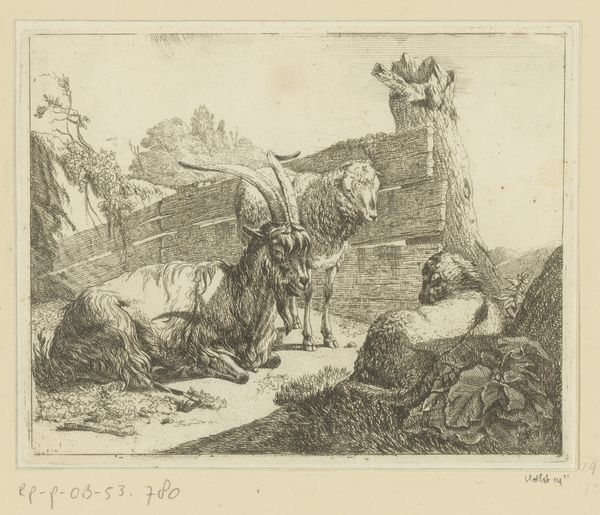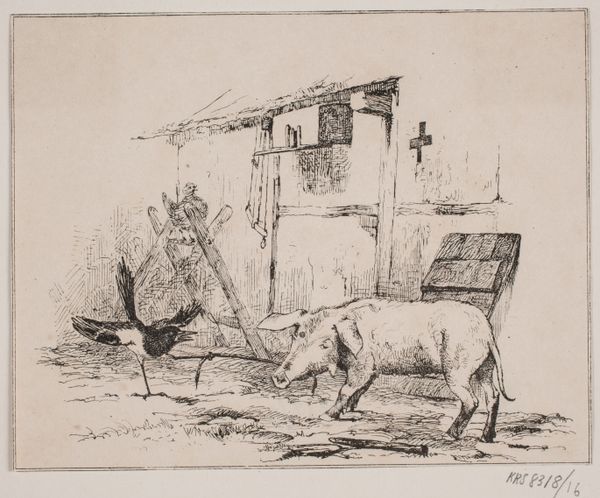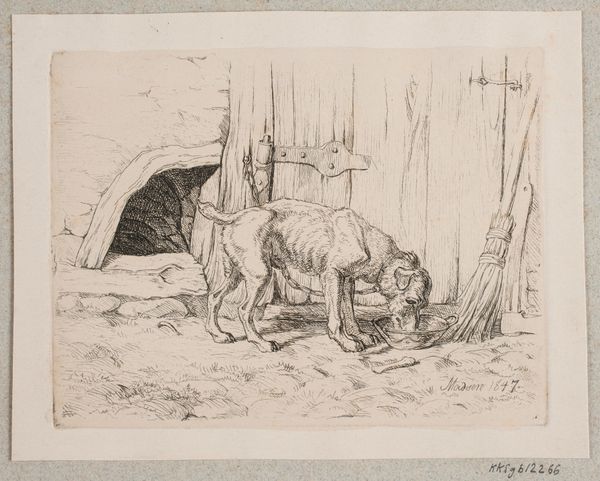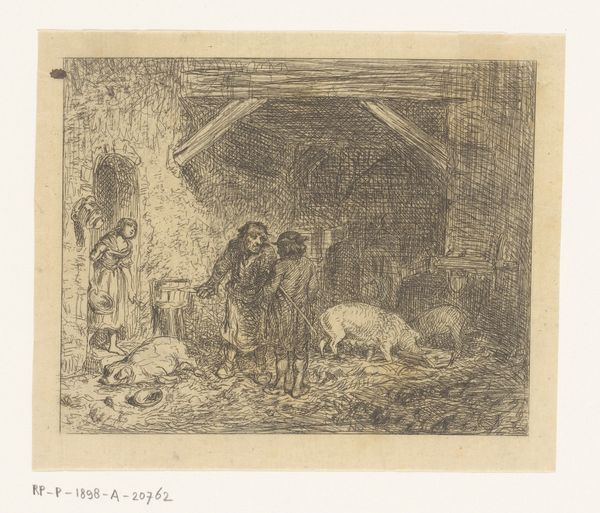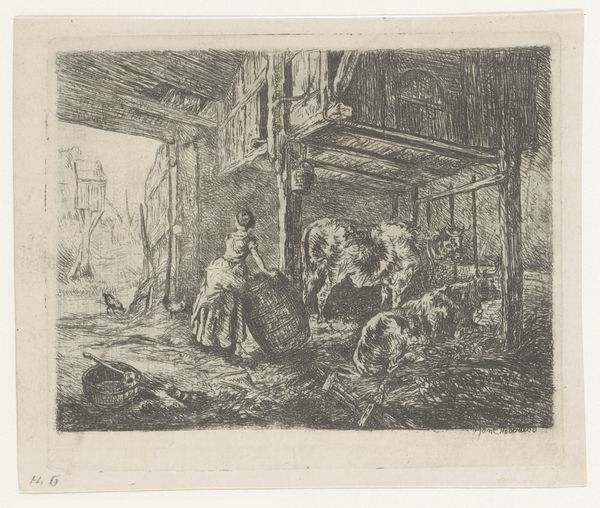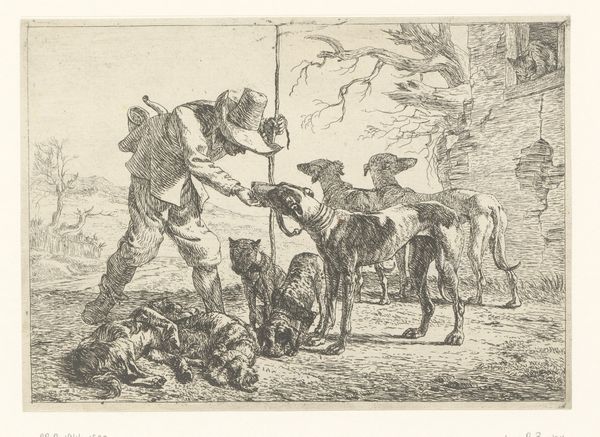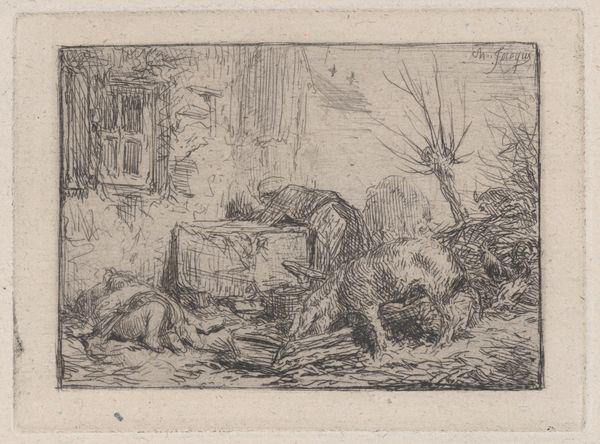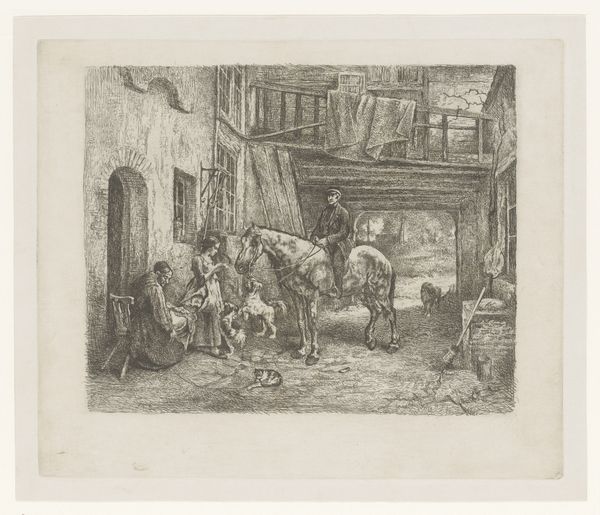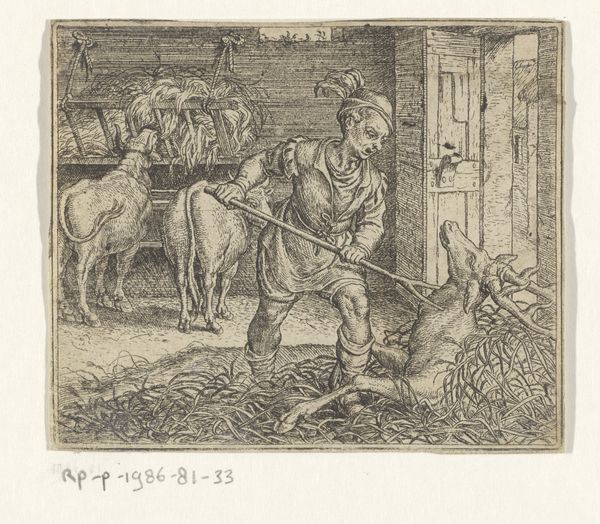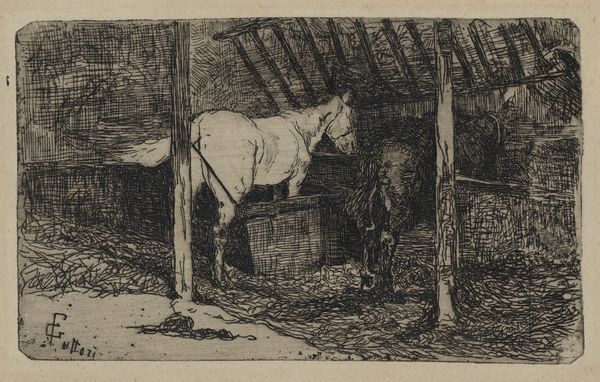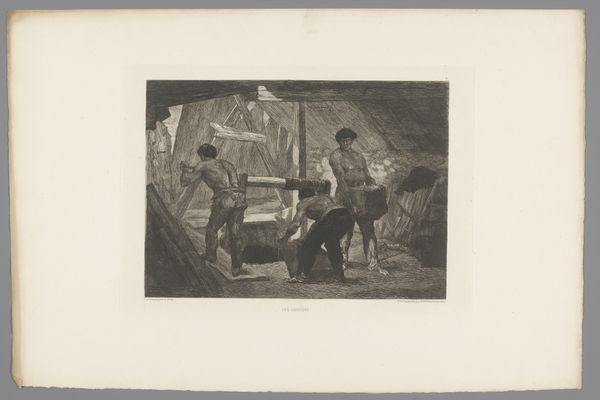
drawing, print, etching, ink, engraving
#
drawing
#
ink drawing
#
animal
# print
#
etching
#
landscape
#
etching
#
ink
#
genre-painting
#
engraving
#
realism
Dimensions: 73 mm (height) x 122 mm (width) (plademaal)
Curator: Welcome. Before us is "Three Dogs Before a Stable Door," an etching and engraving by Lorenz Frølich, created in 1837. Editor: What strikes me immediately is the stillness, despite the tension. The dogs are caught in a moment of alertness, and that muted color palette almost amplifies the sense of contained energy. Curator: Indeed. Let's consider the etching and engraving techniques involved. The artist would have meticulously used acid to bite into a metal plate, creating lines to hold the ink. Look at how skillfully they manipulated the materials, almost sculpturally defining the forms of the dogs. There's an intriguing juxtaposition of meticulousness and spontaneity in the final product. And considering the context of production, how widely could prints such as these have circulated? Editor: Well, domestic dogs are so familiar. Seeing them depicted at the doorway suggests a deeper meaning linked to themes of protection and territory, vigilance and loyalty. The three dogs may function symbolically: guarding the unseen figure peeking through the stable door and the large basket beside it, perhaps alluding to home life. What can we infer from the dogs themselves? There is the tethered hound, alert and sitting; the little scrappy dog seeming about to strike; and a sleepy fellow seemingly undisturbed in the background. Curator: You’re right, the individual characteristics of each dog likely contributed to its reading at the time. And those kennels are expensive! Let's think, though, about the labor involved. The copper plates were made and circulated. Where was the paper sourced? These material considerations provide a far wider picture of how these images would have functioned in society. Were such works meant to promote an image of rural, domestic tranquility, even as the industrial revolution raged? Editor: Perhaps. And what is the social status of this scene? Is it the gentry observing estate work, a family peering out to the farmyard, or something else? Such symbolic questions shape not just our interpretation but also the painting’s social role. Curator: Thinking about these etchings and engravings opens so many material pathways through which images can travel, and lives be touched. It's a captivating thought. Editor: Agreed. It really shows how artworks can resonate, reflecting on themes of protection and territory and prompting a cultural exchange between society, artist, and symbols.
Comments
No comments
Be the first to comment and join the conversation on the ultimate creative platform.
